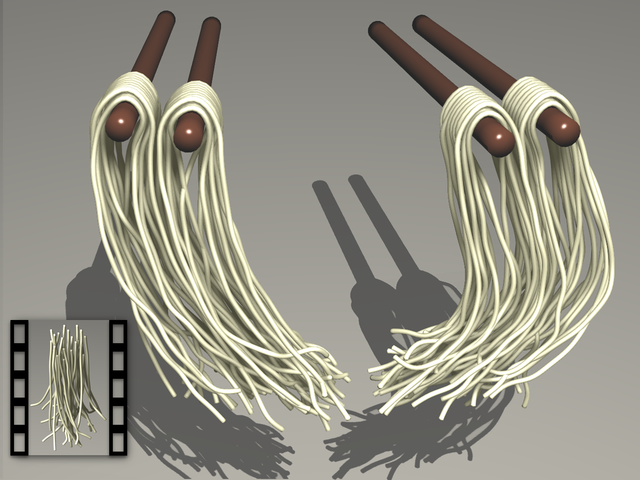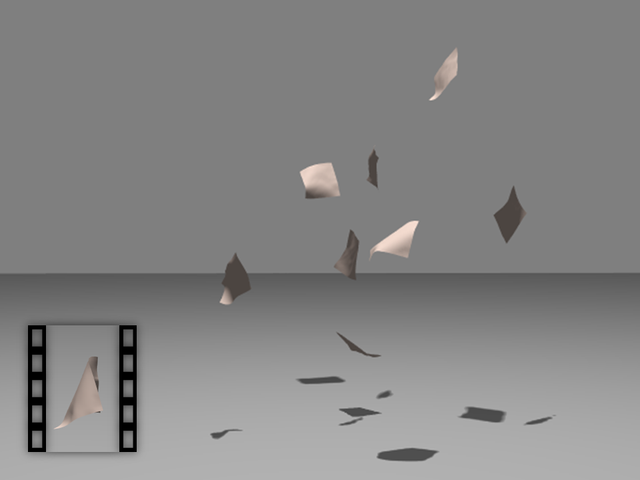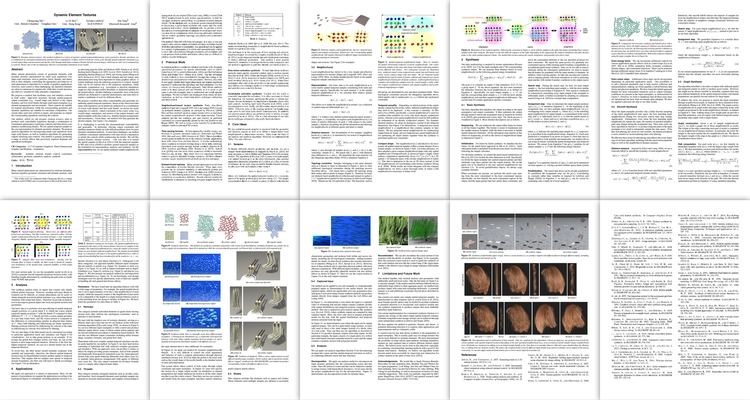Dynamic Element Textures
- Chongyang Ma UBC / THU
- Li-Yi Wei HKU / MSR
- Sylvain Lefebvre INRIA
- Xin Tong MSRA
 |
 |
 |
| (a) fish | (b) spaghetti | (c) scraps |
Our method synthesizes a variety of repetitive spatial-temporal phenomena, such as herd, threads and sheets, via a combination of constrained optimization and data driven computation. Please refer to the accompanying video for corresponding animations of our results.
Abstract
Many natural phenomena consist of geometric elements with dynamic motions characterized
by small scale repetitions over large scale structures, such as particles, herds,
threads, and sheets. Due to their ubiquity, controlling the appearance and behavior
of such phenomena is important for a variety of graphics applications. However,
such control is often challenging; the repetitive elements are often too numerous
for manual edit, while their overall structures are often too versatile for fully
automatic computation.
We propose a method that facilitates easy and intuitive controls at both scales:
high-level structures through spatial-temporal output constraints (e.g. overall
shape and motion of the output domain), and low-level details through small input
exemplars (e.g. element arrangements and movements). These controls are suitable
for manual specification, while the corresponding geometric and dynamic repetitions
are suitable for automatic computation. Our system takes such user controls as inputs,
and generates as outputs the corresponding repetitions satisfying the controls.
Our method, which we call dynamic element textures, aims to produce such
controllable repetitions through a combination of constrained optimization (satisfying
controls) and data driven computation (synthesizing details). We use spatial-temporal
samples as the core representation for dynamic geometric elements. We propose analysis
algorithms for decomposing small scale repetitions from large scale themes, as well
as synthesis algorithms for generating outputs satisfying user controls. Our method
is general, producing a range of artistic effects that previously required disparate
and specialized techniques.
Keywords
Dynamic, element, texture, control, constraints, optimization, geometry, animation, analysis, synthesis
Paper
